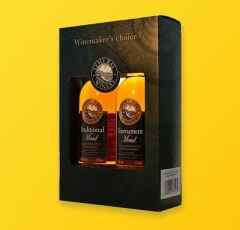Flexible packaging is one such innovation that is gaining popularity across industries and niches. However, many companies are adopting them for their packaging but more especially in food packaging. As it is the best option for many, the business is more sustainable and runs smoothly, and is budget-friendly.
Additionally, your packaging may have a significant impact on how effectively your expanding business functions. Such as, it is convenient and inculcates many marketing benefits in it. However, older packaging techniques could result in unnecessarily high storage and shipping costs. Where Flexible packaging uses less space as it can be bent or folded, as the name suggests. Food items uses to store in these types of boxes such as dry food, food spices, frozen food, and other ingredients. Moreover, learn more about food and beverage packaging here.
Right packaging keeps the food fresh
When food is properly airtight in packaging boxes such as baked items, and cookies. Then they need to be in a store where they can be kept fresh for a longer time. For instance, the bread will become stale if it is left intact for a short time. But it can stay palatable for days if it’s packaged as food. As a result, vacuum-sealed food can remain fresh for weeks or even days without going bad.
Right packaging provides convenience.
Naturally, convenient food packaging benefits both businesses and consumers. Nowadays, almost everyone leads a busy lifestyle that includes work. Whereas, fast-paced lifestyle results, single-serve meals, and ready-to-eat meals get gradually popular. Food packaging businesses have created more food packaging product options as a result of this lifestyle. Our lives have become more convenient as a result.

Right packaging protects the product.
Food protection is all that comes first. For instance, containers made of aluminum foil help keep food fresh. Packaging made of low-quality materials runs the risk of contaminating food and degrading the consumer experience. Additionally, ailing packed food can impede the flow of shipping, ultimately leading to a failed delivery of secure food. Additionally, this will damage the reputation of your company, and no one will want to do business with you.
Benefits of good food packaging
There are many benefits of using high-quality food packaging, some of which are the following;
Visible and clear logo
Knowing what is happening inside your stomach is not a problem. Everybody is up to trying something new. Even though the majority of food packaging lists the ingredients, it can be challenging to read the small print and all the details. The logo on the packaging must have an apparent list of the ingredients that are in the product.
Personalization
Personalization has developed into a significant element of food and beverage packaging and is becoming an increasingly popular trend. Top brands are now customizing their wholesale plastic takeaway containers with printed names. However, it is starting to set trends.
Manual customization might use branded bags, boxes, stickers, and even gift tags to increase brand recognition and appeal. Additionally, food packaging design and development promises more customized packaging to bridge the gap between consumer desires and product reality in the future. Certainly, customers expect that the snacks and foods they purchase will satisfy their unique and constantly changing needs. Creative packaging designs with a personal touch can help businesses meet this challenge.
Positive Effects on the Environment
Environmental impact can be a serious issue for growing businesses. Whereas, your carbon footprint will undoubtedly increase as your order volume and delivery area increase. There is no way to restrict orders, but you can improve the efficiency and longevity of your shipment by changing the packaging into flexible packaging. Prohibiting the use of plastic bags in retail establishments to switch to paper straws produced by dining formations.
On the other hand, several eco-friendly packaging substitutes are starting to appear on the market. The majority of food packaging businesses now use biodegradable food and beverage packaging boxes instead of plastic.

Packaging for Frozen Food
Frozen food packaging is the best product when it comes to using flexible packaging. as frozen food need more safety from other because when the packaging gets little damage the whole stock becomes destroyed. This packaging is most in demand with frozen food such as using cardboard, aluminum, flexible bags, and other uses in their packaging. certainly, food protection is one of the crucial elements that cannot be abandoned.
Minimalistic Food Packaging
Designing food and beverage packaging has seen a significant shift towards minimalism. A small segment of the food packaging industry has switched from stunning and disorganized designs to simplicity with straightforward labeling and packaging. This packaging trend not only emphasizes the value of the product but also avoids overwhelming customers with eye-catching designs and artwork. To give the product a fresh appearance, keep the design understated and simple. The bags used to package food seem fresh, modern, uncomplicated, and revitalizing. However, it does lower the price of your production process.
Marketing tool
packaging is perfect for advertising your brand, as they are more convenient and flexible in nature. However, they are providing more benefits such as they are popular by themselves. Use Kraft paper to make packaging more sustainable and attractive. Whereas, printing is quite easy and convenient in these type o boxes style. So use the best styles to make your packaging design stand out.
Conclusion
Flexible packaging combines the best qualities of plastic, film, paper, and aluminum foil to provide a wide range of protective qualities while using significantly less material. This raises the value and marketability of food and non-food products. Right now, the packaging industry’s fastest-growing segment is flexible packaging for food and beverage packaging. The time is now to embrace flexibility more than ever.



